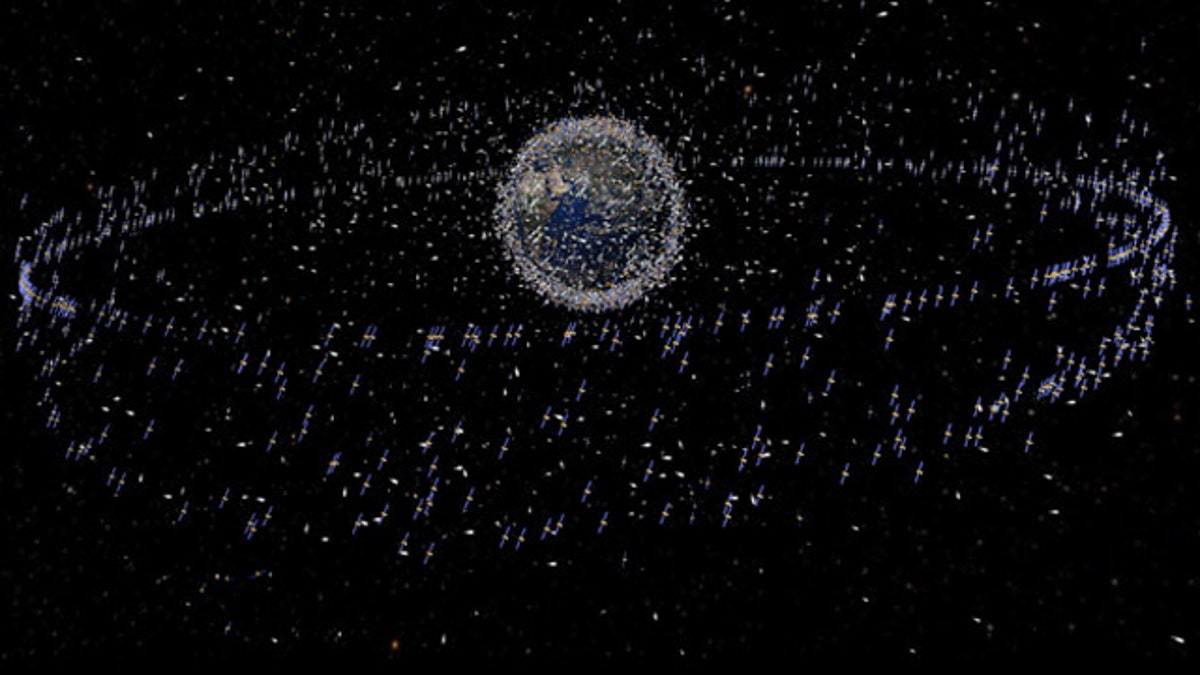
This graphic depicts the trackable object, satellites and space junk, in orbit around Earth. (ESA)
This is no white picket design.
A network of radar sites in the Southern United States called a “space fence” tracks approximately 2,000 bits of space debris orbiting the Earth at incredible speeds, whizzing objects about as big as a dishwasher or refrigerator that pose a serious threat to spacecraft or space stations.
The problem: There’s more like 200,000 objects out there, and the fence erected in 1961 can’t track the tiny ones.
“You take a couple-inch long bit of debris travelling at 17,000 mph and it can pack quite a wallop,” Scott Spence, director of Raytheon’s Space Fence Program, told FoxNews.com.
The current fence consists of three transmitters and six receivers that act as an early warning system for potential collisions in outer space, keeping satellites intact, protecting astronauts aboard the international space station, and generally keeping the peace. But it can’t effectively track the 198,000 other tiny bits of junk orbiting the planet.
“Clearly, there’s a need to track smaller objects at much higher altitudes,” he said.
[pullquote]
So the Air Force wants to mend its fence in space.
Last week the agency approved a working prototype version of a new space fence Raytheon hopes to build: a much taller, stronger model based on two large, S-band radars that will be constructed somewhere along the equator or in the planet’s southern hemisphere.
Though working, the prototype is a smaller, less powerful version of the final project Raytheon hopes to build. (Lockheed Martin is also competing.)
"Space debris threatens systems we depend on every day, including satellites that power navigation, weather and critical infrastructures," said David Gulla, vice president of Global Integrated Sensors in Raytheon's Integrated Defense Systems (IDS) business.
"By building a working space fence prototype and employing innovative approaches Raytheon brought to the table, we demonstrated to the U.S. Air Force a cost-effective system that can track a multitude of small objects in space."
The Air Force maintains a catalog of all those whizzing objects, run out of the Joint Space Command Center at Vandenberg Air Force Base in California. In December, the Air Force will award a final contract for the fence, which it hopes to have up and operating in 2017.
No word on what color they’ll paint this one.
